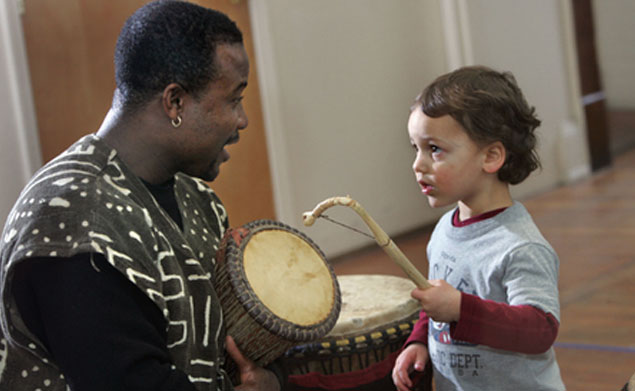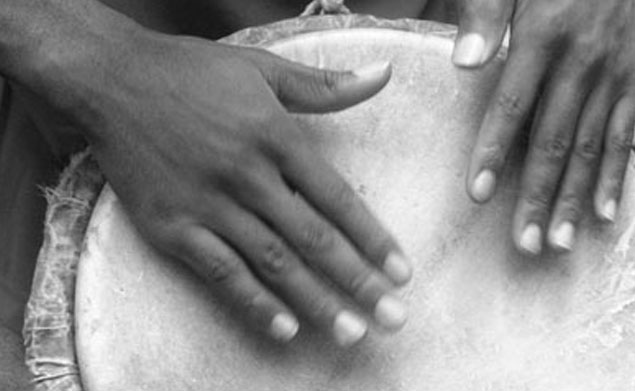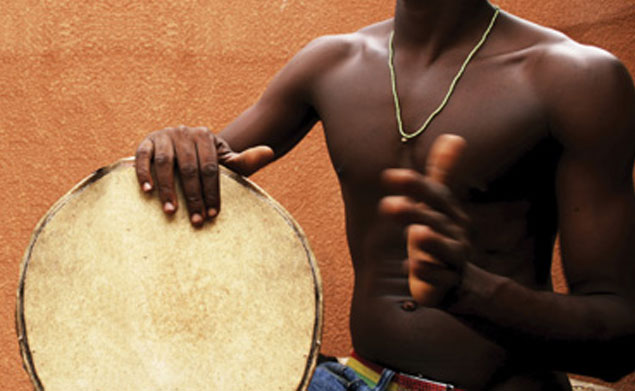Un tamburo non è solo un Drum.
Per la maggior parte degli africani, la musica e la danza sono le espressioni ultimi della vita, cultura, storia e tradizione. Il tamburo, the main musical instrument, creates infectious sounds and rhythms inhibits ever single fiber in your body and transcends you to the spiritual world. While many people view the drum as merely being a musical instrument, it is a symbolic and integral part of African society.
Before there were telephones, high end smart phones like iphones, social media like facebook, twitter and other electronic forms of communication, in Africa, the drum served as the dominant means of communication among tribes. The ‘talking drum’, the popular West African hourglass shaped drum, was and in some parts of West Africa still is, the preferred means of communication since its pitch can be controlled to mimic the rhythm and tone of human speech.
Drums are always present at any ceremonial ritual in African culture. Whether one is celebrating the birth of a child, the coming of a young girl into womanhood, marriage or death, drums, accompanied by dance, help to not only tell the story of each ritual but it also allows the participants to physically feel and enjoy the significance of the moment.
The djembe or jembe drum is one of the most popular and oldest of African drums. While the exact orijin of the djembe is unclear, it has been documented that it was developed in the 12th o 13th century with the formation of the Mali Empire by the Malinke and Susu people (today Mali and Guinea). The ‘numu’, a professional class of blacksmiths, were the first carvers of the djemde which is made of wood and is covered with a ‘membrane’ consisting of rawhide (goatskin) leather. Orijinally created as a sacred drum to be used in most important African ceremonies such as rites of passage, ancestral worship, warrior rituals, as well as social dances, the djembe has become the main choice of drum in many West African societies.
The importance and significance of the djembe drum has been expressed by the ‘best djembe drummer’ as voted in Africa by the Pan-African Festival in Alders Mamady Keita who stated that “For us personally it’s a way for us to share our own thoughts about the world. It helps us show through music that all our problems are not needed, and that we can come together as people because we can come together to play music.”
Oggi, the rythms of the African drum continues to play an important role in Africa and throughout the African Diaspora. Brazil’s most popular music, the samba, entails the usage of various African drums, beats and rhythms. In the Caribbean, culture music (otherwise known as conscious reggae) also incorporates the use of African drums. African drums and the dances that accompany them help to display the beauty African culture and its people and they continue to serve as a preserver of history, life and tradition.
Sometimes I fear that our future generation will loose the culture behind drumming to technology, if we do not include culture to the advancement of technology. The drum does not only bring people together, it unites people in harmony. The rhythm. The beat. The power to solve differences. The voice of the unspoken. Il tamburo.
Ultimi post di Non cambiare (vedi tutti)
- Prima di Rihanna era Grace Jones - Dicembre 27, 2014
- Marimba: Espressione di libertà, eppure i miei afro-ecuadoriani… - Dicembre 25, 2014
- Chi fa pretesa di essere il Reggae capitale del mondo? - Dicembre 24, 2014






